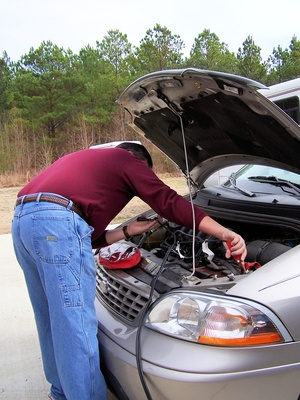
Automotive batteries are an important part of the automotive electrical system. A properly functioning automotive battery allows an automobile to start, and in the event of an alternator failure, the battery can supply emergency power to the automotive electrical system. An automobile battery has other uses as well. While some of these uses are obvious (such as starting power), other uses (such as chassis grounding) are not as well known.
Automobiles require electrical power to start the engine. When the ignition key is turned to the "Start" position, an electrical starter motor turns the motor crank and starts the fuel combustion process. Simultaneously, the ignition system supplies power to the spark plugs. Both processes receive their electrical power from the battery.

Electric circuits require a closed electrical path from the negative power supply terminal to the positive power supply terminal. Because an automobile has rubber tires in contact with the ground, an automobile is isolated from an earth electrical ground source. An automotive battery serves as a chassis ground for the automobile frame, and for the automotive electrical system as well.
When an automobile engine is started, the alternator takes over the function of supplying the automobile with electrical power. However, in the event that the alternator fails, the battery can supply power to the automotive electrical system for several minutes. Automobile batteries have a reserve capacity (also known as "RC") rating. A battery with an RC rating of 60 can supply 25 amps of electrical current for 60 minutes before discharging to 10.5 volts.
Electrical systems for modern automobiles (those manufactured since the 1950s) contain an electromechanical device called an alternator. An alternator produces an alternating current electrical signal. However, the electrical and electronic devices in an automobile require direct current electrical energy.
While alternator diodes convert the alternating current energy into direct current energy, the voltage level of the resulting direct current energy can vary wildly. Installing a battery in a parallel circuit with the alternator allows the alternator to charge the battery; in turn, the battery absorbs most of the variances in voltage, allowing the electrical system to provide a steady source of direct current energy.
While a battery is perhaps better known for supplying electrical energy, a battery may also serve as an energy storage device. A battery is recharged by receiving energy from the alternator. This energy replaces the electrical energy expended during the engine starting process, thus allowing the battery to be used for thousands of engine start cycles.